Everything You Need to Know About Your Quad Muscles
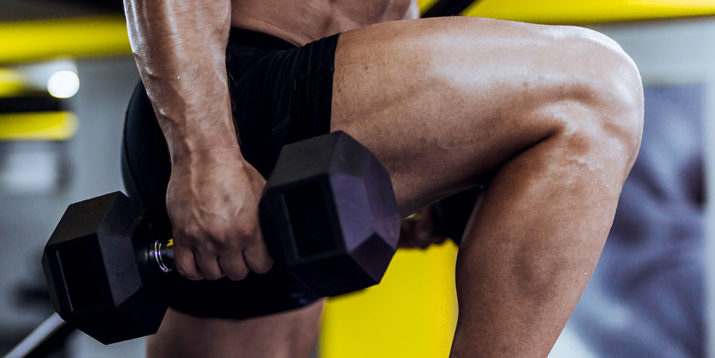
If you want to sculpt a pair of awe-inspiring, strut-worthy legs, look to your quad muscles, a.k.a. quadriceps femoris, a.k.a. “quads.”
This meaty group of leg muscles makes up the entire front of your thighs and, aesthetics aside, help power everyday movement.
From more active motions like walking and running, to brief, one-off efforts like getting out of your car or standing up from the toilet, quad muscles are vitally important.
So it pays to learn about their form and function.
Anatomy of the Quad Muscles
Your quads are made up of four muscles, all of which help straighten your knee.
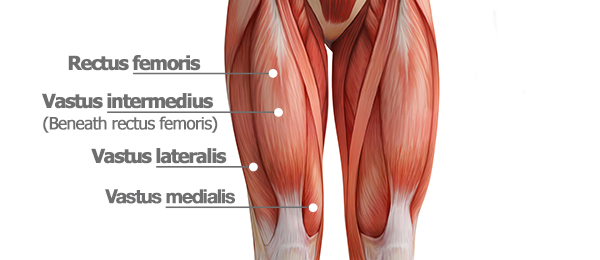
Rectus femoris
This is the only quad muscle with two heads and that crosses two joints — the hip and the knee — to assist with both knee extension and hip flexion.
Originating at two different points on your pelvis, the rectus femoris passes down the front of your thigh and ends at its attachment point on the kneecap (patella).
Vastus intermedius
This quadriceps muscle sits deepest on your thighbone (femur). It extends vertically down the center of your thigh and is partially covered by the rectus femoris.
Vastus lateralis
The largest of the quad muscles, the vastus lateralis begins at the top of your outer thigh and attaches to the patella. When well-developed, it creates a sexy outward sweeping shape to your thigh.
Vastus medialis
The vastus medialis runs along the inside of your thigh and forms a teardrop contour above your knee when defined.
3 Quad Exercises for Muscle Growth and Strength
When targeting your quad muscles for strength and size, you want to pick moves that involve knee extension.
1. Squat
According to personal trainer and NASM performance enhancement specialist Cody Braun, squats are among the best quad-building exercises.
“[They’re a] compound movement, which allows you to add tremendous weight and volume,” Braun explains.
Not only are squats a great exercise for your quads, but there are a zillion variations you can choose from: back squat, front squat, goblet squat, zercher squat, pistol squat, Bulgarian split squat, and many more.
2. Step-up
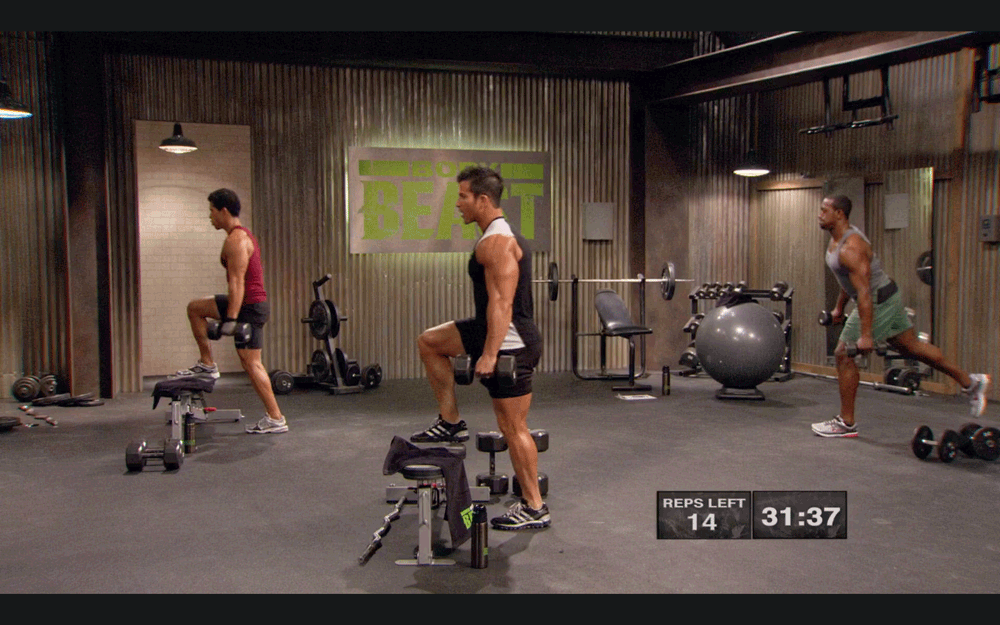
- Stand tall holding a pair of dumbbells at arm’s length by your sides, and place your right foot on a bench so that your hip, knee, and ankle are all bent 90 degrees.
- Keeping your chest up and shoulders back, push your body up with your right leg until it’s straight (keep your left foot elevated).
- Pause, and then lower your body back to the starting position under control. Perform equal reps on both legs.
3. Lunge
Lunges and their variations are more great exercise options for thickening your thighs while building unilateral (single-limb) strength.
“If you have an imbalance between your left and right quads, you could be leaving untapped strength gains on the table when it comes to your compound lifts,” Braun says.
In addition, working your quads separately forces your core and other stabilizing muscles to kick in to help you maintain balance in an unstable position.
You’ll also develop functional strength to better perform everyday activities; after all, basic actions like walking and running are really (alternating) single-leg movements.
Like the squat, you have many different lunge variations to choose from, so don’t be shy. Incorporate forward, reverse, lateral, curtsy, and drop lunges into your workouts to fire up a wide range of muscles.
How Often Should You Train Your Quads?
Aim to train your legs two to three times per week.
If your goal is strength, keep the reps and sets low and the resistance high. If your goal is mass, keep the reps moderate and sets high, and be sure to incorporate both multi- and single-joint leg exercises into your routine, Braun recommends.
Common Quad Pains and Injuries
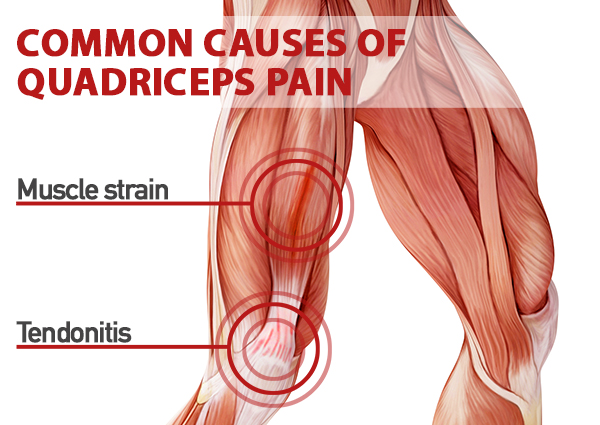
When it comes to thigh muscle pains and injuries, two types top the list of complaints: quad strains and quad tendonitis.
Quad strains
Quad strains involve tearing in the muscle itself and can result if you work a muscle too hard or stretch it under a load too fast, says exercise physiologist Dean Somerset, C.S.C.S.
Pain ranges from slightly uncomfortable to severe.
Mild strains will usually heal on their own within a week, Somerset says. Meanwhile, more severe strains may take 6 to 12 weeks to heal, or even upwards of 6 months in some cases. Full-on ruptures actually require surgery to repair.
Quad tendonitis
Meanwhile, tendonitis occurs when there’s significant irritation to a tendon, which then triggers an inflammatory response from the body.
“Tendons don’t tend to heal as fast as muscles, so when you’re working really hard and more frequently, the tendon may get overworked and start to get inflamed,” Somerset explains.
How to Stretch Your Quad Muscles
The quads are technically two-joint muscles. They connect at both the knee and — thanks to the rectus femoris — the hip, which they work to extend and flex, respectively.
As such, any quad stretch should involve these two movements, Somerset says.
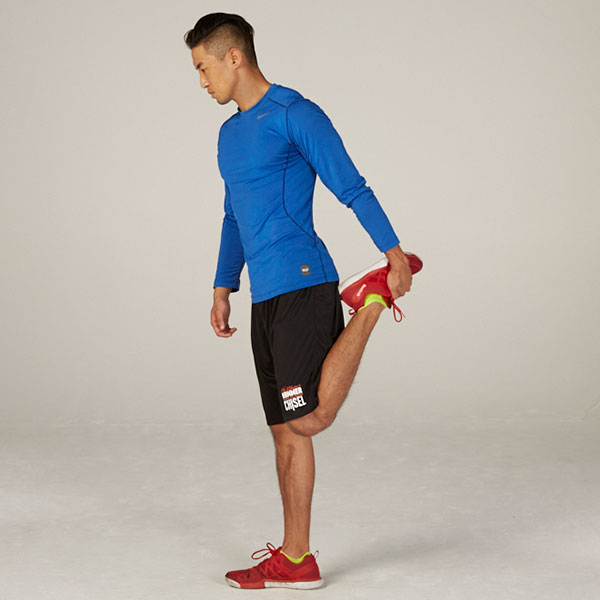
- Standing with your feet hip-width apart, bend your left knee so that your heel nears your left butt cheek, and grab the top of your foot.
- Keep knees close together, press your hip forward, and stretch the front of your hip and knee for 30-60 seconds.
- Reverse the stretch and switch sides.
In order to prep the quads for activity, you need to contract and stretch them to simulate the movements you’ll be performing during your workout. This is known as dynamic stretching.
Braun recommends walking lunges, bodyweight squats, and the walking quad stretch.
The walking quad stretch is similar to the quad stretch above, except you hold the position for 1 or 2 seconds and then take a step forward, repeating on the opposite side. Continue alternating steps and stretches.
